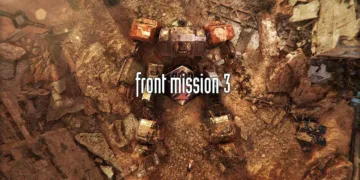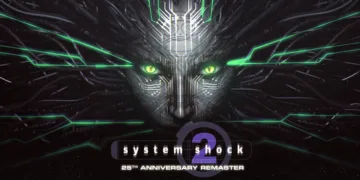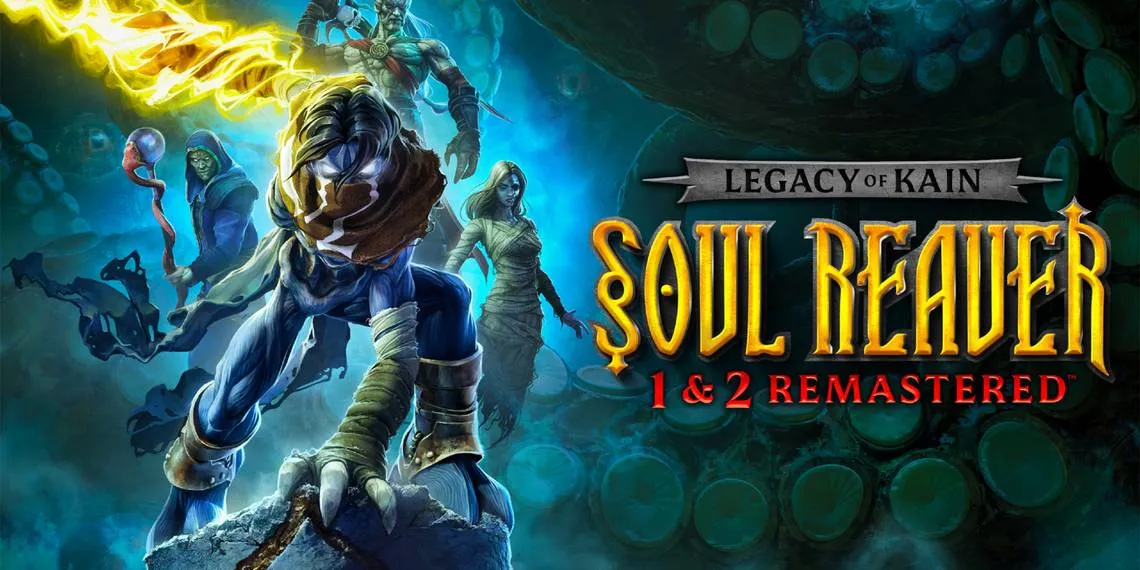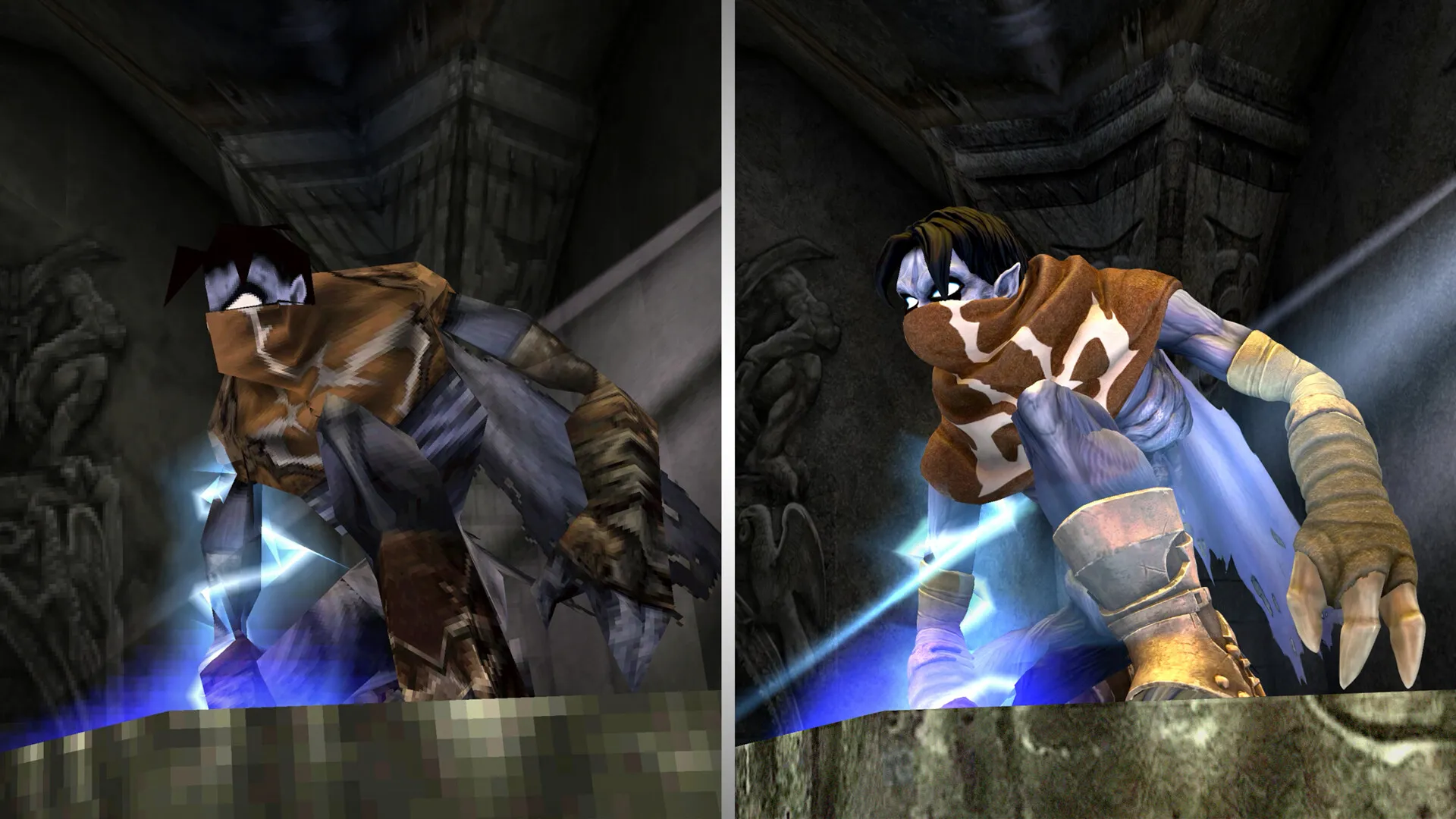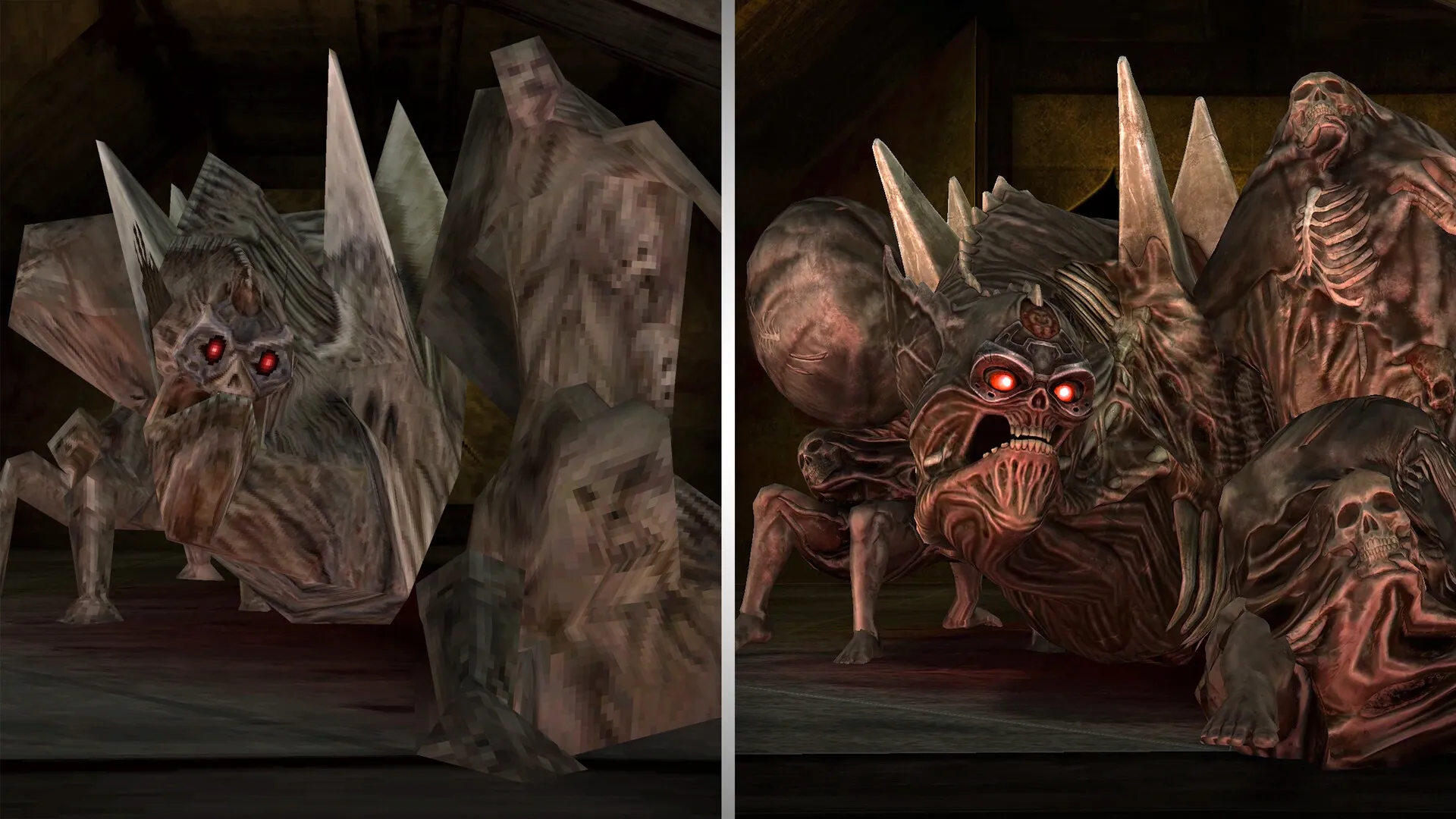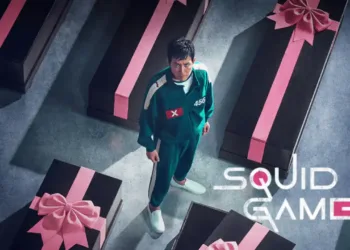The narrative of Legacy of Kain: Soul Reaver 1 & 2 Remastered goes into great detail about the troubled relationship between Raziel, a former servant of the vampire lord Kain, and his boss, who used to be very powerful. The story takes place many years after Blood Omen, and Raziel is on a quest for revenge, full of themes of betrayal, redemption, and existential thought.
His evolution from a proud warrior to a wraith illustrates the tragic journey of a character stuck between fate and free will, mirroring the complexities of classic literature and akin to the problems characters in works like Milton’s Paradise Lost face.
Nosgoth’s world serves as a spooky setting that enhances the narrative. It has crumbling landscapes with gothic architecture and other relics of a society that used to be thriving. The atmosphere is full of history and despair. The gameplay is greatly influenced by this setting, which is not just a background. For example, Raziel’s ability to shift between the Material and Spectral realms is closely connected to the environment. This enables players to move through and manipulate their surroundings in novel ways.
Each area, from the creepy Silenced Cathedral to the murky depths of the Drowned Abbey, was carefully planned to represent the story’s themes, making exploration an important part of the narrative experience. Such environmental storytelling improves the gameplay by allowing players to engage with Nosgoth not only as a place to go but also as a character in its own right, which strengthens the connection to Raziel’s adventure.
Mastering the Shadows: Navigating Gameplay Innovations
Based on its Metroidvania roots, Legacy of Kain: Soul Reaver 1 & 2 Remastered mixes puzzle-solving and interacting with the world, making for fun gameplay. The power of Raziel to shift between the Material and Spectral realms is at the heart of the experience. The way players interact with the world is fundamentally changed by this mechanic, which also serves as a narrative device.
For example, water and solid walls act differently based on the realm. This makes the game more interesting and forces you to think strategically and explore. In order to access new paths or manipulate the world, players must frequently shift realms in order to solve difficult puzzles. This design choice echoes the puzzle-focused gameplay in titles like The Legend of Zelda: Ocarina of Time, where players must engage with their surroundings to advance.
The level design further enhances this experience with interconnected areas that encourage exploration and backtracking, typical of the Metroidvania genre. From the Silenced Cathedral’s imposing architecture to the Drowned Abbey’s eerie depths, each place is filled with lore and visual storytelling. Every part of Nosgoth feels alive and important to Raziel’s journey, and the game rewards careful exploration with hidden lore and upgrades.
The combat in Soul Reaver is an intriguing combination of standard hack-and-slash gameplay and original vampire lore. When playing most action games, enemies can be killed by force, but in Soul Reaver, players have to weaken vampires before they can deal the final blow. To do this, you can throw them into direct sunlight and water or use environmental dangers against them, an exciting twist that makes battles more interesting.
Raziel’s tools change as players get better, letting them access new skills that improve both movement and offense. For example, getting the powerful Soul Reaver blade enriches your battle options and opens up new exploration possibilities. This combines character development with gameplay mechanics in a way that is reminiscent of the God of War series.
Overall, the game’s gameplay experience feels fresh and engaging while also giving homage to the genre’s roots thanks to its innovative puzzle-solving, intricate level design, and a combat system that prioritizes environmental interaction.
A Darkly Beautiful Revival: Visuals that Captivate
Legacy of Kain: Soul Reaver 1 & 2 Remastered’s improved graphics are very different from the game’s original graphics, which were famous but often had problems because of the technology available at the time. New character models and textures make the remastered versions look better, showing the dark and gothic style of the game more clearly and in more detail.
For example, the intricate designs of Nosgoth’s buildings, which were hard to see before because of low-resolution textures, now stand out with bright detail, letting players fully enjoy the series’ atmospheric settings.
A big part of this improvement is also the effect of modern lighting. Shadows move around more, and lighting sources behave more realistically, making the game’s general mood much better.
Players can enjoy the evolution of visual design while still feeling connected to the original experience thanks to the thoughtful feature that lets them switch between old and new graphics with the press of a button. It’s great how this feature can show how far technology has come since the late 1990s, bridging the gap between nostalgia and current gaming tastes.
In terms of performance, Soul Reaver 1 & 2 Remastered works well on modern hardware. No major stability issues have been mentioned, which is good news for fans who remember how often bugs happened in the original. Some graphic bugs, like texture pop-ins during cutscenes, take away from the experience.
These problems aren’t big, but they show how hard it can be to remaster a game that was really ahead of its time. Overall, the remaster does a great job of updating the visuals. Still, it also serves as a reminder of the series’ illustrious legacy by fusing the old and the new in a respectful and fresh way.
Streamlined Experience: Enhancements for Modern Players
Reaver 1 & 2 Remastered makes several quality-of-life changes that greatly improve the player experience, especially in terms of control and navigation. One of the most important changes is the addition of current control schemes that let players change how their inputs are mapped.
Controlling the camera with the right thumbstick is a great addition that fixes one of the biggest problems with the first games. This change makes the gameplay more aligned with modern titles, making exploration and platforming more fluid and natural.
In addition to better controls, the remaster includes maps and compasses to help travel. These changes make it easier for players to find their way around than in the original, where it was easy to get lost because there wasn’t a clear path.
The compass is a subtle guide, guiding players toward goals without giving them too many signs, which keeps the game’s exploratory nature. This balance is reminiscent of how The Legend of Zelda: Breath of the Wild encourages players to study lore while still giving them helpful hints.
Also, there have been big changes to the save system. When playing the original games, players often had to start over after loading a save, which meant they had to do a lot of extra work. In Soul Reaver 2, the remaster enables more standard checkpoint saves, streamlining gameplay and lowering frustration.
This change is in line with a larger trend in modern gaming, where ease of use and accessibility are valued, ensuring that the remaster feels both fresh and accessible to both newcomers and experienced gamers.
Echoes of Nosgoth: The Impact of Sound and Voice
Legacy of Kain: Soul Reaver 1 & 2 Remastered’s sound design is a big part of how players feel like they are in the scary world of Nosgoth. The voice acting is a highlight, with performances that add to the emotional weight of the narrative.
Raziel and Kain are played by Michael Bell and Simon Templeman, who both give deeply moving performances that resonate. In particular, Templeman’s performance as Kain brings out the character’s royal threat, making every interaction tense. The choice of actors shows a dedication to quality; trained stage actors add a theatrical flair that enhances the gothic atmosphere and is reminiscent of the dramatic storylines in titles like Bioshock.
With a score that skillfully weaves themes of despair and rage into the gameplay, the music makes the experience even better. The music that Kurt Harland wrote successfully emphasizes important moments, shifting from haunting melodies to intense orchestral pieces that raise the stakes during crucial scenes.
The atmospheric sound design goes well with this, with sounds that make the decaying regions of Nosgoth come to life. A sense of place that is both engrossing and disturbing is created by the echo of faraway cries and the whisper of wind through buildings that are falling apart. The voice acting and music score greatly enhance the overall narrative engagement, ensuring that Raziel’s sad journey draws players in.
Beyond the Game: Engaging Extras for Devoted Fans
Legacy of Kain: Soul Reaver 1 & 2 Remastered includes a wealth of bonus material that enriches the overall experience for fans of the series, going beyond just graphical improvements. Many behind-the-scenes materials are on the remaster, such as concept art, design papers, and rough cuts from the original recording sessions.
Players can enjoy the painstaking work that went into creating the dark narrative and complex world of Nosgoth thanks to this wealth of content that provides a look into the development process behind the games. These details are reminiscent of the extra features in The Last of Us Remastered that help players learn more about the characters and the story’s setting.
One of the most notable features is including levels that were originally cut from the original releases due to time restrictions or technical limitations. These places show ideas considered for the game but not included in the final version. They are interested in learning about how the game was made over time. Exploring these levels sheds light on the developers’ ideas and gives players a fresh way to engage with the game, providing fresh challenges and nostalgia for long-time fans.
Additionally, the inclusion of lore materials enhances the storytelling experience and enables players to learn more about the world’s rich mythology in Legacy of Kain. Akin to the intricate world-building found in franchises like Dark Souls, the lore documents give meaning to the characters and settings. This new material connects the series’ past and present, appealing to both die-hard fans and newcomers alike.
Overall, these extras improve the fan experience by creating a sense of community and encouraging involvement. They honor the legacy of the original games and welcome a new generation of players to get lost in Raziel and Kain’s complicated world.
A Legacy Reimagined: Final Thoughts on the Remaster
Remastered does a good job of bringing a popular series back to life, appealing to both old-school gamers and new gamers. The improved visuals and sound design give Raziel’s scary journey new life, and the gameplay has been streamlined to make it more approachable to newcomers.
Fans of narrative-driven games will enjoy the story’s complex character arcs and philosophical ideas, which resonate with the depth found in titles like Dark Souls and Bioshock.
Players can engage with the lore in a meaningful way thanks to the inclusion of bonus content like lost levels and behind-the-scenes materials, which further enrich the experience.
Overall, this remaster is a great way for new players to get into the game and a touching tribute to old fans. This remaster is a great addition to any action-adventure library, whether you’ve played the other games in the series or this is your first time visiting Nosgoth.
The Review
Legacy of Kain: Soul Reaver 1 & 2 Remastered
Legacy of Kain: Soul Reaver 1 & 2 Remastered expertly combines nostalgia with modern improvements plus stunning visuals, improved gameplay mechanics, and a tightly wound narrative. While including bonus material increases player engagement, the voice acting and atmospheric score elevate the experience. While allowing a new generation to experience Nosgoth's dark lore, this remaster respects its legacy.
PROS
- Enhanced graphics and modern control schemes improve gameplay.
- Engaging voice acting and atmospheric soundtrack enrich narrative immersion.
- Inclusion of bonus content and lost levels adds depth for fans.
- Streamlined save system makes progression more user-friendly.
CONS
- Minor visual bugs during cutscenes.
- Some original mechanics may feel dated to new players.
- Limited innovation on core gameplay elements.

































